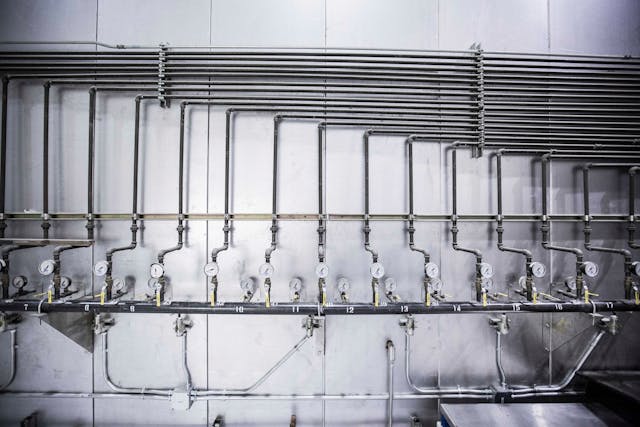Hydro jetting is a powerful and efficient solution for clearing stubborn clogs and cleaning plumbing systems. Unlike traditional methods that may only partially remove debris, hydro jetting uses high-pressure water to thoroughly clear pipes and restore optimal flow. This advanced plumbing technique is ideal for homes and commercial properties facing recurring drain issues.
Read about Unclog Drain here!
What is Hydro Jetting?
Hydro jetting, also known as water jetting, involves using a high-pressure stream of water to remove blockages, grease, and buildup inside pipes. The process is performed with specialized equipment, such as a hydrojet plumbing machine or sewer jetter, which delivers water at pressures strong enough to break apart even the toughest clogs.
How Hydro Jetting Works
- Inspection
Before starting hydro jetting, plumbers inspect the pipes using a camera to assess the clog and check for damage. This step ensures that the pipes can withstand the pressure. - Insertion of the Hose
A flexible hose connected to the hydrojet plumbing machine is inserted into the drain or sewer line. - High-Pressure Water Blast
The machine releases water at pressures ranging from 1,500 to 4,000 PSI (pounds per square inch). The water stream breaks apart clogs, removes debris, and flushes out accumulated grease, roots, and sludge. - Final Inspection
After cleaning, another camera inspection is conducted to confirm that the pipes are clear and free of blockages.
Benefits of Hydro Jetting
- Thorough Cleaning
Unlike traditional methods, hydro jetting removes all debris, buildup, and residue, leaving the pipes completely clean. - Eco-Friendly Solution
Hydro jetting uses only water, making it an environmentally friendly option compared to chemical drain cleaners. - Prevention of Future Clogs
By thoroughly cleaning the pipes, hydro jetting reduces the likelihood of recurring clogs. - Safe for Most Pipes
When performed by a professional, hydro jetting is safe for most plumbing systems, including PVC and metal pipes.
Common Applications of Hydro Jetting
- Hydrojet Drain Cleaning
Hydrojet drain cleaning is perfect for tackling tough clogs in sinks, bathtubs, and floor drains. It can effectively remove hair, soap scum, and grease. - Sewer Jetting
Sewer jetting is used for cleaning the main sewer line. This method is especially useful for removing tree roots, grease, and sludge that accumulate over time. - Commercial Jet Plumbing
Businesses, particularly restaurants, benefit from jet plumbing to clear grease and food debris from kitchen drains and prevent blockages. - Residential Applications
Homeowners use hydro jetting to address persistent clogs and maintain clean plumbing systems.
Hydro Jetting vs. Traditional Methods
While traditional methods like snaking are effective for minor clogs, hydro jetting offers several advantages:
- Complete Removal of Buildup
Traditional drain snakes may leave behind some residue, while hydro jetting completely clears the pipes. - Longer-Lasting Results
Hydro jetting prevents future clogs by removing all debris and buildup, whereas snaking may require frequent use. - Versatility
Hydro jetting can handle a wide range of blockages, from grease and food particles to tree roots and mineral deposits.
When to Use Hydro Jetting
Hydro jetting is suitable for various situations, including:
- Persistent clogs that traditional methods cannot resolve.
- Foul odors coming from drains, indicating buildup inside the pipes.
- Slow-draining sinks or bathtubs.
- Regular maintenance to prevent blockages in high-use plumbing systems.
However, it’s essential to avoid hydro jetting if your pipes are old or damaged, as the high-pressure water could cause further harm.
DIY vs. Professional Hydro Jetting
While there are DIY sewer jetter kits available, hydro jetting is best left to professionals.
- Professional Expertise
Plumbers have the knowledge and equipment to perform hydro jetting safely and effectively. - Risk of Pipe Damage
Improper use of high-pressure water can damage pipes or cause leaks. - Comprehensive Inspection
Professionals use cameras to inspect pipes before and after hydro jetting, ensuring the job is done correctly.
Tips for Maintaining Clean Drains
- Avoid Pouring Grease
Grease can solidify and cause blockages. Dispose of it in a separate container instead of pouring it down the drain. - Use Drain Strainers
Install strainers to catch debris like hair and food particles. - Flush Drains Regularly
Pour boiling water down drains weekly to remove minor grease and soap buildup. - Schedule Regular Maintenance
Consider hydrojet plumbing services every one to two years for optimal performance.
Frequently Asked Questions
Is hydro jetting safe for all pipes?
Hydro jetting is generally safe for modern pipes, but older or fragile pipes should be inspected beforehand to prevent damage.
How often should hydro jetting be performed?
For residential properties, hydro jetting every one to two years is typically sufficient. Commercial properties may require more frequent cleaning.
Can hydro jetting remove tree roots?
Yes, hydro jetting is effective at removing tree roots, but the plumber may also recommend root-killing treatments to prevent regrowth.
Conclusion
Hydro jetting is a highly effective solution for clearing tough clogs and maintaining clean plumbing systems. Whether you’re dealing with stubborn buildup in residential drains or grease accumulation in commercial plumbing, hydrojet drain cleaning provides a thorough and eco-friendly solution.
